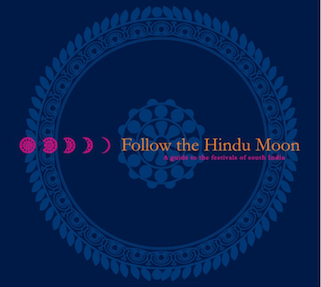|
The Indian Analyst
|
South Indian Inscriptions |
V.- Inscriptions at Tiruvallam No. 58 to 60 verandah round the Bilvan, maha mandapa, north of the tank No. 42 - On a boulder near Tiruvallam & No. 43 - Bilvanathesvara temple No. 44 to 47 Bilvanathesvara shrine No. 48 to 51 west, north, south wall of the shrine No. 52 to 54 wall shrine, & maha mandapa & nakulesvara shrine No. 55 to 57 Bilvanathesvara shrine, south wall of the maha mandapa No. 61 to 63 north wall of the maha mandapa & west wall of the kitchen No. 58.- On the base of the veranda round the Bilvanathesvara shrine This inscription is dated in the 26th year of the reign of Rajakesarivarman, alias Kulottunga-Choladeva (I.), the mentions, in addition to the conquests recorded in Nos. 77 and 78 of Vol. II., the defeat of Vikkalan and Singanan, i.e., the two Western Chalukya kings Vikramaditya VI. And Jayasimha III.[1] It states that a lamp was granted to the temple by a native of Kalavai in Sengunra-nadu, a subdivision of Palakunra-kottam. Kalavai is a village in the Arcot taluka,[2] and Sengunra-nadu seems to be named after Sengunam in the Polur taluka of the North Arcot district. (Line 1.) Hail ! Prosperity ! In the twenty-sixth year (of the reign) of king Rajakesarivarman, alias the emperor Sri-Kulottunga-Soladeva, who, - while the goddess of fame became renowned (through him), while the goddess of victory was coveting (him), while the goddess of the earth became brilliant (with joy), (and) while the goddess with the (lotus) flower (i.e., Lakshmi) wedded (him), - had put on by right of inheritance the excellent crown of jewels ; who had caused the wheel of his (authority) to roll over all regions, so that the Mi[navar] (Pandyas) lost (their)firmness, the Villavar (Cheras) trembled, (and) Vikkalan (and) Singanan plunged into the western ocean ; and who, having performed the anointment of victory, was graciously seated on the throne of heroes together with (his queen) Puvanamulududaiyal.
(L. 2.) I, Man[radi] A[rai]yaraman Ma[ndaga]van, alias A[ra]sara[nala]yakkon, of Kalavai, alias Ulagalanda-Sola-chaturvedimangalam, in Sengunra-nadu, (a subdivision) of Palakunra-kottam, gave one sacred perpetual lamp to (the temple of) Mahadeva at Tiruvallam in Karaivali, (a subdivision) of Perumbanappadi, (a district) of Jayankonda-Sola-mandalam. For (maintaining this lamp, I) gave ninety-six full-grown ewes, which must neither die nor grow old.[3] (L. 3.) Having received these (ewes), we, Kausikan Angadi-Bhattan, who is in charge of the store-room of this temple, Muppattiruva-Bhattan of (this) city,[4] and the other Siva-Brahmanas, shall have to burn this sacred lamp as long as the moon and the sun exist. (L. 4.) This (charity is placed under) the protection of all Mahesvaras. No. 59.- On the south wall of the Mahamandapa in the Bilvanathesvara temple This inscription is dated in the 23rd year of the reign of Kulottunga-Choladeva and records the gift of a lamp by a Ganga chief whose name is not quite distinct, for the benefit of his daughter who was the consort of prince Vira-Choladeva. The sheep, which were, as usual, given along with the lamp, were made over to two persons (1. 7) whose names occur also in the preceding inscription of Kulottunga I. (No. 58, 1. 4). This circumstance enables us to identify Kulottunga-Choladeva (1. 1) with Kulottunga I. and prince Vira-Choladeva (1. 4) with Vira-Choda, the son of Kulottunga I. and viceroy of Vengi.[5] (Line 1.) Hail ! Prosperity ! In the twenty-third year (of the reign) of Kulottunga-Soladeva, - (I), Nilaga[nga]n Ach[chalavima]n Araisar-[Ta]lai[va]n,[6] gave one sacred perpetual lamp and gave for (it) ninety-six full-grown ewes, which must neither die nor grow old,[7] to (the temple of) Mahadeva at Tiruvallam in Karaivali, (a subdivision) of Perumbanappadi, (a district) of Jayankonda-Sola-mandalam, for (the spiritual merit of) my daughter Villavan-Madeviyar,[8] the consort of prince Vira-Soladeva. (L. 6.) Having taken charge of these sheep, Kausikan Angadi-Bhattan, the Siva-Brahmana who is in charge of the store-room of this temple, Muppattiruva-Bhattan of this city, and the other Siva-Brahmanas [shall have to burn] this lamp as long as the moon and the sun exist. No. 60. â On the wall of the north of the tank in the Bilvanathesvara temple This inscription records that certain income was assigned to the temple by Sengeni Mindan Attimallan Sambuvarayan in the 8th year of the reign of Kulottunga Choladeva. As another member of the Sengeni family is mentioned in inscriptions of Rajaraja III.[9] it may be assumed that the king referred to in Vol. I. No. 132, and Vol. III. Nos. 60 and 61, is Kulottunga-Chola III., the predecessor of Rajaraja III.[10] (Line 1.) Hail ! Prosperity ! In the 8th year (of the reign) of Kulottunga-Soladeva, from the month of Masi, - I, Sengeni Mindan Attimallan Sambuvarayan, gave for the repairs of the temple the money accruing from the internal revenue[11] of the temple of the lord Tiruvallam-udaiyar, the trisula-kasu and (the fines called) kurram and danda.[12] (L. 5.) As long as the family of the Sengenis exists, those who obstruct (this charity) shall incur the sin of one who killa tawny cow between the Ganga and Kumari. (L. 7.) Velaivangi, a Vairagin (who was) the chief of Tiruvallam, caused this charitable gift to be made. [1] See above, Vol. II. p. 390. [2] No. 96 of the Madras Survey Map ; see Ep. Ind. Vol. IV. P. 271. [3] See above, Vol. II p. 375, note 3. [4] See below, No. 59, text line 7. [5] Ind. Ant. Vol. XX. P. 284. [6] I.e., âthe chief of kings.â [7] See above, p. 119, note 6. [8] This title means âthe great queen of the Chera king.â [9] Above, Vol. I. Nos. 61 and 64. [10] See above, pp. 43 and 79. [11] See above, pp. 43 and 79. [12] See above, p. 38, note 5.
| ||||||||||||||||||||||||||||||||||||||||||||||||||||||||||||||||||||||||||||||||||||||||||||||||||||||||||||||||







